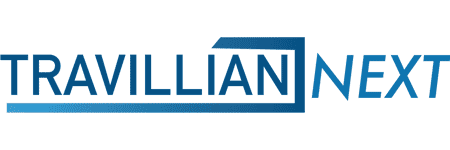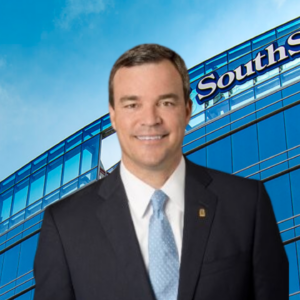This is the inaugural article of Travillian’s original content emphasizing the “human element” to the banking industry. The dilemma: At a time when COVID-19 has wreaked havoc in our personal and professional lives, and it feels like we need less coverage, not more, what can we put out worth reading?
As I pondered this, an email from our Managing Partner, David Yancoskie, hit my inbox. It was sent to the entire team, telling us that this is the time to double our efforts and stay totally focused – even as business slows, the phone rings less, employees are working remotely, and we are figuring out what to do with our school-less children. It was the recruiter’s equivalent of Mel Gibson’s speech in Braveheart.
The intention: inspire, motivate and ease the anxieties of our team. The message: if we’re there for folks when times are bad, they’ll be there for us when times are good.
A company’s leadership has the power to enhance or degrade their culture and employee loyalty during turbulent times. Additionally, community banks specifically can “be there” in a meaningful way for some of the most financially vulnerable members of our country during this crisis. Therefore, it is critical that leaders motivate their teams so they can, in turn, support their communities to the best of their ability.
The Personal Touch is Extremely Important
Due to the complexities created by this pandemic, clear-cut answers to many of the questions that our business leaders are pondering are hard to find. Along with the financial security of their businesses, company executives are considering the psyches of their people.
Matt Deines, President and CEO of First Northwest Bancorp in Port Angeles, WA ($1.3 billion in assets), lives 65 miles and a short ferry ride away from his Seattle office, near “ground zero” of the coronavirus in the United States. “I’m trying to be here for the team,” he says. “We have a bunch of employees who are happy to be here. They work in the branches, or they’re supporting our phone center. And so, you know, it’s a conundrum: Do I set a good example by being here, or do I set a good example by working from home? What’s the right thing to do?” Ultimately, he asked all non-essential personnel to stay home but felt that, as CEO of the bank, it’s important for his people that he be present, though he is practicing social distancing.
Lars Eller, CEO of Farmers & Merchants Bancorp in Archbold, Ohio ($1.6 billion in assets), has spent a lot of time over the past 2 weeks being visible to his employees at various offices and locations. He checks in on them, asks about their families, and meets every day with his senior leaders. He also has been ending each day with an email from him to the whole bank. As he puts it, he’s been making “glass is half-full decisions,” for instance, not subtracting PTO if someone gets sick. He feels that these personal touches are making the workplace positive as his colleagues “feel empowered… that they control their own destiny.” Various CEOs that we spoke to in vastly different geographies (e.g., Oregon, Wisconsin, Louisiana) echoed this sentiment. Some have simply added 10 PTO days across the board, and some have taken all pressure off requesting time off, both of which were extremely well-received by the institutions’ employees.
As a symbol of solidarity with both customers and employees, there have been numerous accounts of managers buying breakfasts and lunches for their teams, directly from local businesses who clients of the bank.
Give Your People A Voice
By now, almost every bank has sent out company-wide best practices on COVID protection and sanitation via email or intranet. One Mid-Atlantic-based $10B bank took communication a step further by having its executive team hold an “all-team” conference call on Tuesday morning. The CEO, COO, and CAO took ample time to openly praise front-line employees for their crucial role in servicing customers. The executives then opened the phone lines to allow for a 30-minute Q&A session, and employees asked various questions about what would happen if people got sick or if branches had to close their doors. One branch manager we spoke to at this bank was appreciative of the attention and open dialog with its leaders, and said he felt more motivated to contribute.
With regard to employee engagement, Steve Cohn, Co-Head of Travillian’s advisory arm, TTG|Align stated that, “In times like these, employees want to be heard. They want a voice. Having an ’employee involvement‘ program in place during a crisis—whereby employees can voice any concern, operational or otherwise, such that they always get a response from the organization (i.e., whether they’re using the suggestion, or whether they aren’t)— makes team members feel more connected to the company. It increases employee engagement and, in turn, customer satisfaction, performance, and commitment.”
Unite Your People by Focusing on the Customers
A Mid-Atlantic-based Chief Retail Officer has seen his people generally divide themselves into a few thought groups, based on how seriously they are taking this pandemic: the skeptics (“This is overblown!”), the overly cautious (“I need more Purell!”), and the vacationers (“Nice, two weeks off!”). Through straightforward, daily communication and perspective, these groups need to be united for a common good: delivering the bank’s services to clients in a time of need. These managers are coaching their people in the importance of putting skepticism, caution, and laziness aside to concentrate solely on service. Truly great leaders also remove all obstacles, such as sales goals, performance tracking, and side tasks in order to optimize the focus on service and relationship management.
It may be said that many community banks have true entrepreneurs on their team, especially in their sales ranks. However, even the greatest entrepreneurs need inspiration. Steven Bianchi, CEO of Citizens Community Bancorp ($1.5 billion, Eau Claire, WI) spoke with me about how he and his Chief Banking Officer set specific expectations for their remote colleagues and gave them pre-written scripts to help RMs and bankers. These scripts enable the bankers cover the right territory and ask the right questions, such as, “How do you think you’ll be affected by this?” and, “What do you need from your bank so we can support you?” Steve emphasized that, at the end of the call, we “remind our customers that we’re well-capitalized, we’ve got good liquidity, [their] deposits are insured up to $250,000 and we’re going to be working together here to support you.”
Client outreach is key, since so many economic fears have been stoked. A commercial lender at a $3 billion bank in Southeastern PA told us about the clear communication that he received from his Chief Executive and Chief Lending Officer: Employees need to empathize with the banks’ clients, as customers ultimately make employees successful. They are everything to the bank. This is an obvious statement, but an important one because it prepared the lending team appropriately as they spoke to their clients. This lender mentioned two phone calls he had with commercial clients who were on the verge of tears, due not only to anxiety over their revenue and repayment, but also to tears of gratitude around assurance from their trusted banker. We have heard this repeatedly from other bankers on the front lines. These interactions create bonds between banks and their clients that are rare during “normal” times.
Retention, Retention, Retention!
Our bank team has been told all kinds of unique stories from bankers across the country. For instance, we heard several accounts of “platooning” at every level of the bank, so that certain people pairings are separated from others at all times. One CFO at a $1 billion Southeastern-based community bank told us he has his loan operations group separated into groups, working for 6 hours a day (but getting paid for 8 hours). Another CFO, at an acquisitive $25B+ East Coast bank told us that his Board has mandated that, due to their proprietary knowledge and deeply strategic and distinct skill-sets, he and his CEO cannot be in the same building, so they have to alternate weeks in different offices.
This type of differentiated thinking is required when there is no chapter in the manager’s manual for recent events. But ultimately, keeping their employees motivated, focused, and proud of their institutions is the best thing executives can do in this moment. This is particularly important for talent, those with the competencies to drive the bank’s performance as we emerge from this crisis. These are the people that banks need to retain at all cost, as the cost of replacement is vastly higher than the cost of engagement. We’ll investigate this very important topic more directly in a future article.
Obviously, we don’t know how long this pandemic will last, but if there’s anything to celebrate, it’s that communities are banding together to help their residents. Community banks, as one CEO told me, “are made for this moment” as beacons within their neighborhoods.
Travillian’s Banking and FinTech Practice provides Search and Talent Advisory services to depository institutions across the country. Established in 1998, the firm has built a unique platform that touches every corner of the industry. To learn more, click here, or get in touch below!
|
Brian Love, Head of Banking & Fintech
(484) 680-6950 | blove@travilliangroup.com |






